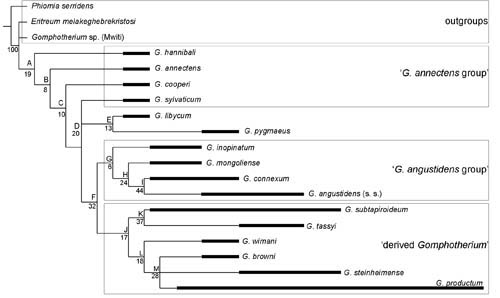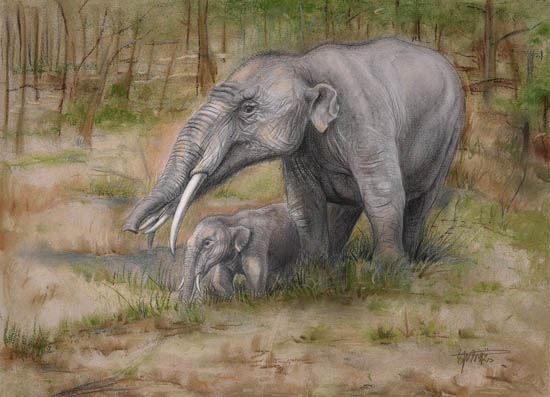For a long time, gomphotheres have been considered a central link in the evolution of proboscis. The origins of Rhynchotheres and Cuvieroniines are more or less related to codons. However, Codon is also considered to be a problematic genus and a garbage bin group in the evolution of proboscis. Historically, at least sixty species have been placed in the genus Codon or its synonymous genera. , there are currently more than ten species that have been widely recognized. There is no consensus on whether these species have synonyms or synonyms, and the academic community is even more divided on the systematic evolutionary relationship between species. The reason is that there are very few automorphic features (autapomorphy) in the genus Gyrodon (the only recognized autapomorphy is the oval or pear-shaped lower incisors), the characteristics of the cheek teeth are not specialized, and the intraspecific variation is relatively small. big.
In the Journal of Vertebrate Paleontology, Volume 37, Issue 3, published on August 11, 2017, Wang Shiqi and others from the Institute of Vertebrate Paleontology and Paleoanthropology, Chinese Academy of Sciences published a report on embeddedness as a cover article. Latest results in evolutionary research on the genus Odontus. The researchers selected 16 representative species of the genus Gnodon from Eurasia, Africa and the Americas for study, which basically covers all Gnodon groups in the world. In this study, the researchers fully developed the elements of the morphological characteristics of the proboscis proposed by Professor Pascal Tassy of the Museum of Natural History in Paris, France, in 1985, and compared the morphological characteristics of these codons in detail. Comprehensive morphological characteristics of the skull, mandible, incisors and cheek teeth; on this basis, using the method of cladistic analysis, three monophyletic groups and one paraphyletic group were identified from the genus Gyrodon, making the genus Gyrodon Phylogenetic relationships between species are well resolved.
According to reports, the researchers also described a new species of Gomphotherium tassyi discovered in the late Miocene in the Linxia Basin. The new species was named after Professor Pascal Tassy in honor of his work on proboscis, especially on proboscis. To pay tribute to the great achievements made in the research of odontids. Comprehensive research shows that Gomphotherium subtapiroideum and Gomphotherium subtapiroideum form a branch of the Gomphotherium group with cheek teeth that develop in the cutting direction, thus having a certain relationship with the Mammutids. Morphological similarity. The existence of this similarity is an important reason for a lot of confusion in the classification and identification of proboscideans and mammothids, and it has also shaken the basic understanding of proboscidean classification to a certain extent.
Original link: http://dx.doi.org/10.1080/02724634.2017.1318284

Figure 1. The evolution of the genus Gyrodon (photo provided by Wang Shiqi)

Figure 2. Ecological restoration of Tasmania’s codon (drawn by Guo Xiaocong)
animal tags: Elephantids fossils evolution elephant Taxodon proboscis
We created this article in conjunction with AI technology, then made sure it was fact-checked and edited by a Animals Top editor.